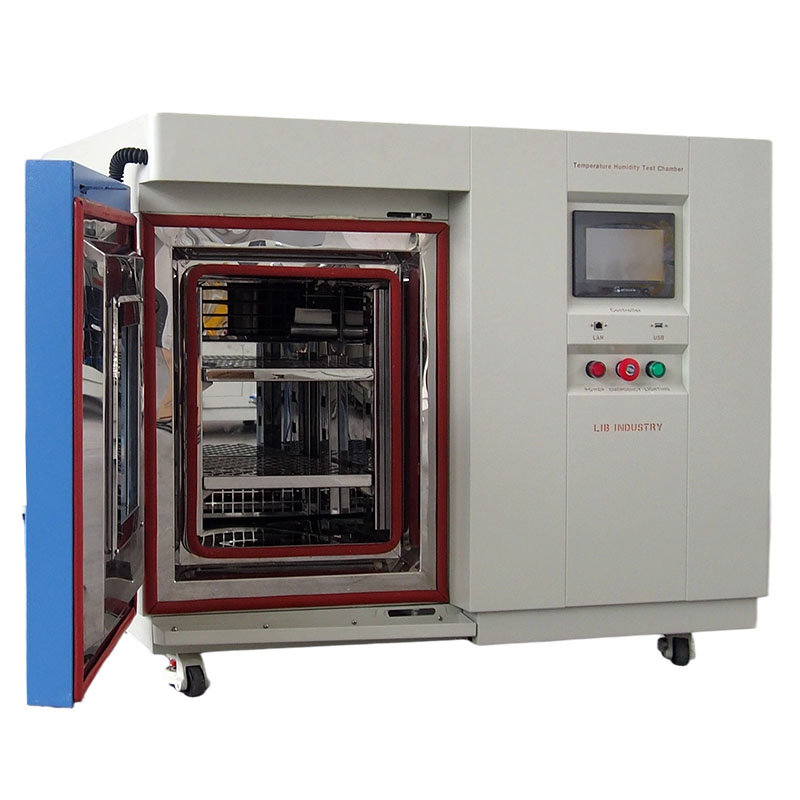Ever wondered how stuff handles crazy heat, freezing cold, or super humid air? Let’s explore how temperature humidity chambers test materials to make sure they’re tough enough for the real world—before you use them!
A temperature humidity chamber is a cool machine. It makes hot, cold, or wet conditions to test how strong products or materials are. These chambers make sure things can handle tough weather before they get to you.
The main job of a temperature humidity chamber is to create a controlled space. It sets exact heat and humidity levels. This helps companies do fast tests to see how products age, handle heat changes, or resist water.
Lots of industries use these chambers. Electronics folks test circuit boards in hot, wet conditions to make sure they last. Car makers check parts like sensors or plastic bits to mimic years of use. Airplane companies test parts for high-altitude weather. Drug companies and material scientists use them too, like for pills or new fabrics.
Using these chambers has tons of perks:
Making exact heat and humidity inside a chamber takes smart systems. These handle heating, cooling, wetting, and drying, all working together with easy controls.
Temperature stays steady with clever heating and cooling tricks.
Heating parts, like coils or infrared heaters, warm the chamber fast. They adjust quickly to keep the heat just right for tests, like checking phone screens in a hot lab.
Cooling uses compressor systems or special setups for super cold tests. Some fancy chambers use liquid nitrogen refrigeration to hit lows like -120℃. Temperature change rates from 1 to 15°C/min. Low temperature available: A: -20℃, B: -40℃, C: -70℃, D: -86℃, E: -120℃.
Humidity is just as important as heat for copying real-world conditions.
To make things humid, chambers boil water or use ultrasonic gadgets to add moisture to the air. This can push relative humidity (RH) up to 98% for wet tests.
To lower humidity, chambers use cold coils or drying systems to suck out moisture. This is key for testing stuff that needs dry air, like electronics.
Chambers have key parts that team up to give trusty test results.
The inside work area is usually stainless steel to fight rust. It’s wrapped in super good insulation to keep heat in and save energy during long tests.
Super accurate sensors watch the heat and humidity all the time. They send info to the control system to tweak things and keep a record.
Fast fans spread air evenly so every spot in the chamber feels the same. Vents clear out extra heat or moisture when needed, like in a car parts test.
Doing a test takes a few steps to make sure it’s right and repeatable.
Samples need to be set up carefully. Put them on racks or trays so air can flow around them easily, like testing a new gadget.
Modern chambers have touch screens. You pick the heat, humidity, speed of change, wait time, and number of cycles. You can save programs for tests you do a lot.
Built-in trackers save all the test info. You can pull it out later to check or show it meets rules. Alerts pop up if something goes off track.
Yup! Temperature humidity chambers let you tweak settings for all kinds of tests.
Chambers handle super cold (-70℃ or lower) to super hot (+180℃). Humidity can go from 10% to 98% RH. 30L, 50L min benchtop temperature humidity test chambers are small…low types available -20℃/-40℃/-60℃/-70℃, 10% – 98% RH.
Fancy models let you set up tricky test patterns, like day-night or seasonal changes. The test chamber can pre-record the programs, so that customers can start test only click program numbers. This is great for long tests mimicking real weather.
Safety is huge when dealing with extreme heat or cold for long times.
Systems stop damage from power surges or too much strain. They shut off parts if things get too wild, keeping the chamber safe.
Most chambers have big red stop buttons. These cut power fast if something breaks or someone messes up, keeping everyone safe.

When picking a top-notch chamber maker, LIB shines for its awesome engineering and worldwide reach.
XiAn LIB Environmental Simulation Industry is a pro at making lab gear with their own brand, LIB. Since starting in 2009 by Yang Menglin, they’ve sold to 42 countries, working with big names like Intel, IBM, Intertek, and Stanley Tools.
LIB offers over 39 floor models from 50L to 3000L, including benchtop, floor type, and walk-in units. Our climate and humidity test chambers are available in a variety of sizes…including benchtops, floor type and walk-in. They handle super cold to super humid tests and meet ISO standards.
Before you grab a chamber, think about what you really need.
Pick a chamber size based on your samples and air flow. Benchtop models are great for small labs, while walk-in ones fit big batches, like car parts.
Some tests need fast heat changes; others need steady conditions. Make sure your chamber fits your needs, like cold resistance tests or storage tests. To perform cold resistance test, thermal cycling test…storage condition…
Look at the price, but also think about fixing, spare parts, and local help. LIB has 7 first-tier distributors around the world for quick support.
Choosing a temperature humidity chamber means checking size, test types, and upkeep. Think about your needs, like flexible controls or tough builds, and your budget. LIB’s awesome chambers and global support make them a top pick for keeping your products strong and reliable!
You can test metals, plastics, electronics, fabrics, coatings, and even some bio samples, like for rust or water tests.
Top chambers like LIB’s are super precise, with heat off by only ±2°C and humidity by ±2.5% RH in steady conditions.
With regular care, like cleaning and calibration, they can last over 10 years, even in busy labs.
View more product
